Guiding your mount can make a huge difference to the quality of your deep-sky images. This is because accurate tracking enables you to increase the length of your exposures while ensuring you get good, point-like star shapes by avoiding star-trailing.
Fitting your guide camera to an off-axis guider (OAG) is a popular alternative to the time- honoured practice of fitting it to a separate guide telescope to make sure that your mount tracks objects accurately.
They also resolve two of the issues associated with using a separate guidescope – additional weight and unwanted movement between the two telescopes.
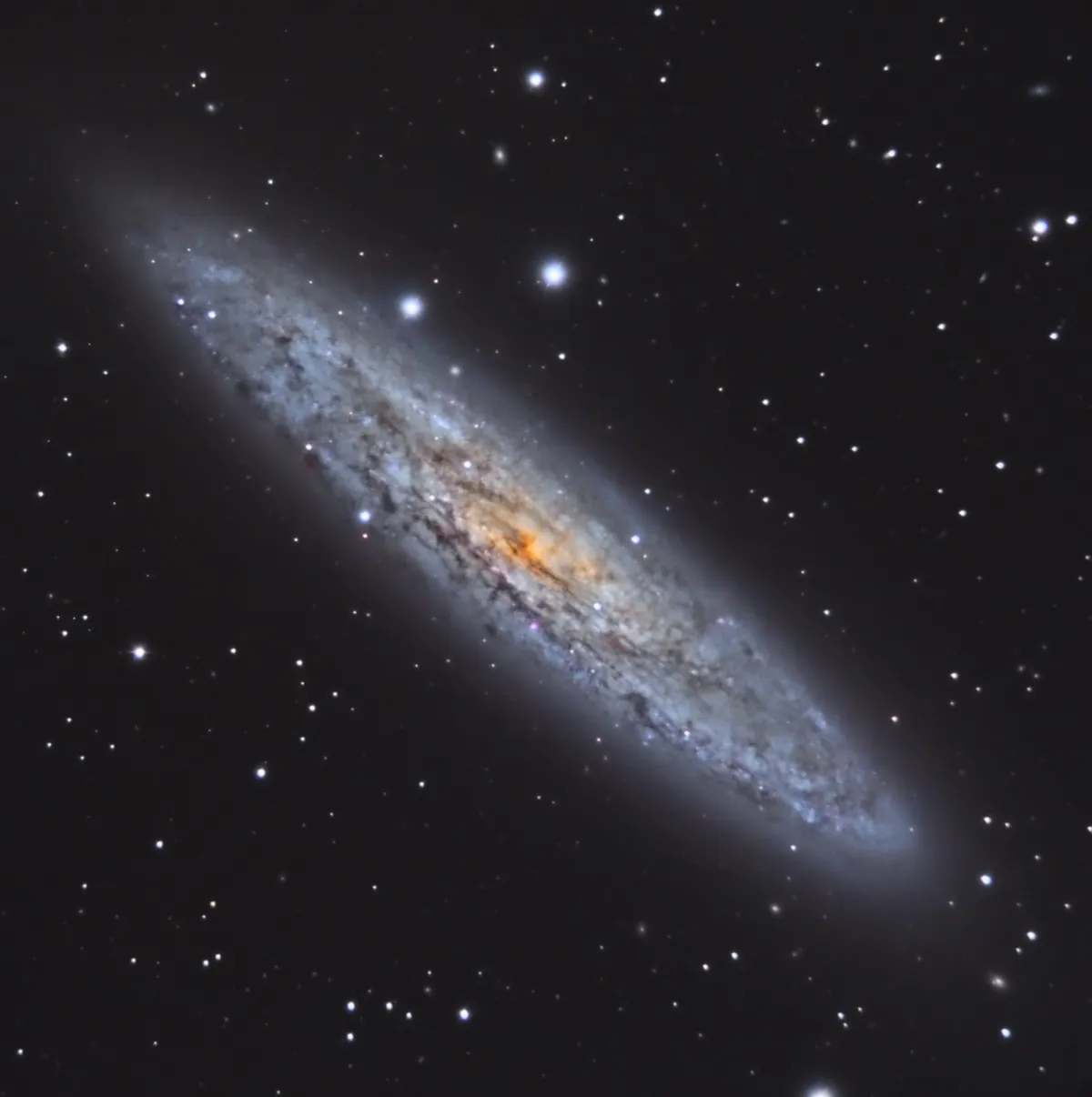
OAGs are small and light, but most importantly, they have a small prism that picks off a sample of the view to find a guide star, through exactly the same telescope that you use for imaging.
They’re not without their own issues – it can be difficult to achieve simultaneous focus of the imaging camera and the guide camera, and the reduced field of view captured by an OAG’s prism can make locating suitable guide stars difficult.
But they do get rid of unwanted movement between the main scope and guide scope, and combat the problem of ‘mirror flop’ in Schmidt-Cassegrain telescopes, when the scope’s mirror moves slightly during long exposures as the scope tracks.
If you’d like to know whether an OAG could help you take better images, read on as we put four to the test.
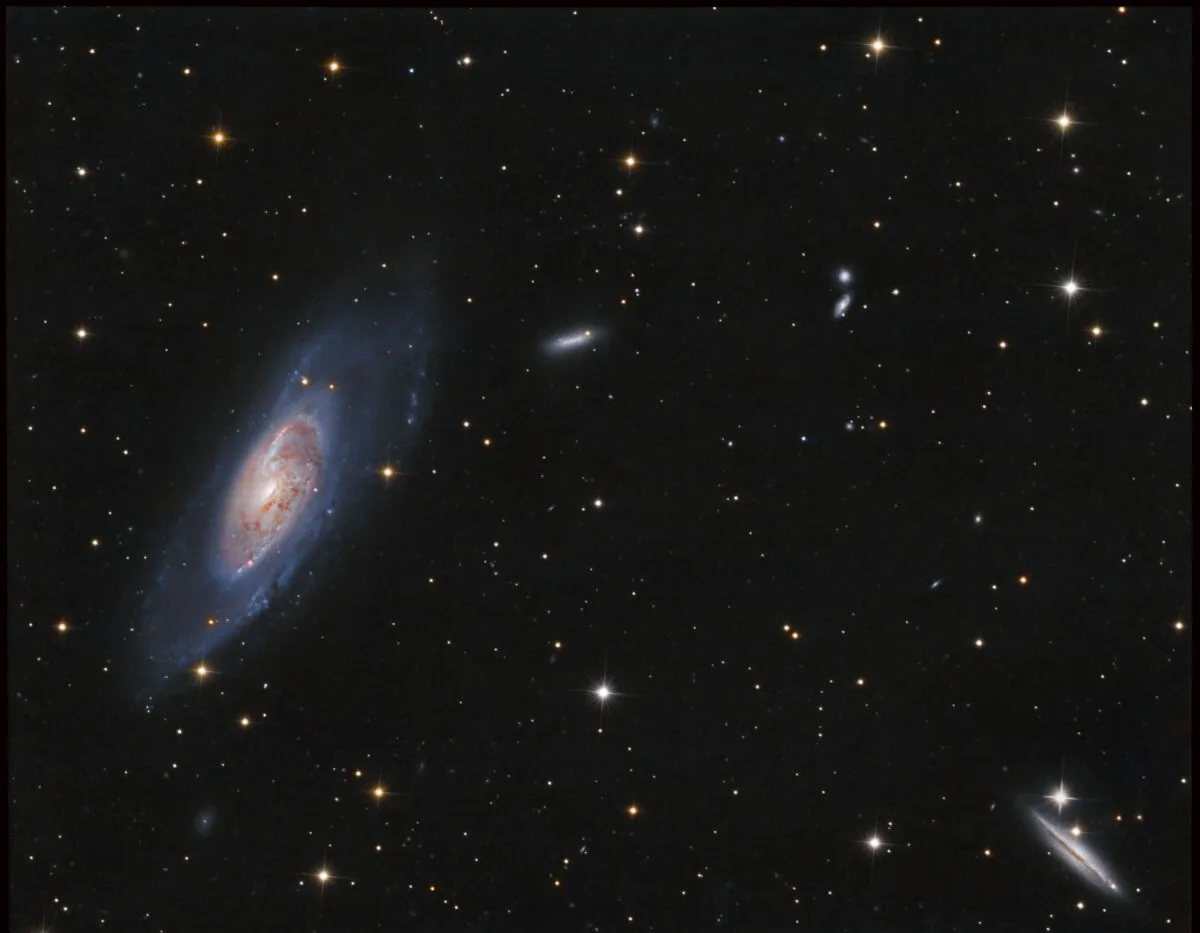
How we tested our off-axis guiders
All off-axis guiders were tested using the same criteria: build & design, connectability, ease of use, features and guide star quality.
The features we looked at included:
Attachment
We checked how easy it was to attach each off-axis guider to the telescope and to the imaging and guiding cameras. We also tested the rigidity of the connections, as any movement here could result in inaccurate tracking.
Construction
Off-axis guiders should be light, to avoid stressing the focus tube, yet robust enough to support the weight of both an imaging camera and a guide camera. The pick-off prism should be of high quality – adjustable yet held securely.
Ease of focus
It’s important that both the imaging and guiding cameras achieve focus at the same point, so we checked that this was possible and noted any adaptors and spacers that were required to attain good focus with both.
Image quality
The pick-off prism can introduce optical aberrations as it collects light from the very edge of the field of view where optical distortions are at their worst. We checked the quality of the guide stars to ensure their suitability.
Prism use
We noted the size of each prism, as this would affect the area of sky that would be covered, and checked if the prism’s position could be adjusted to allow us to choose a specific area of the sky from which to select guide stars.
Best off-axis guiders
Celestron Radial Guider
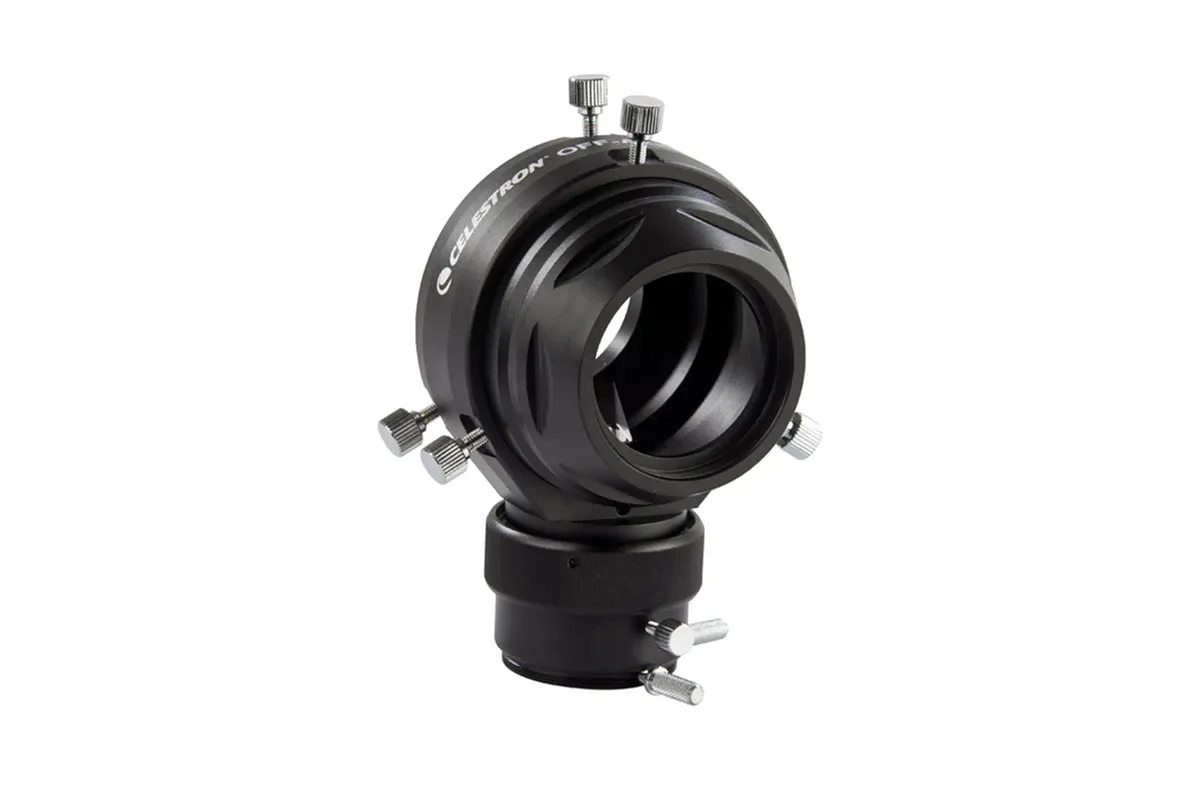
- Buy now from PicStop
The Celestron guider is beautifully made with a black satin finish outside and a ridged matt finish inside to avoid reflections.
The horizontal orientation of the 9.5mm-wide prism is adjusted by unlocking the 1.25-inch eyepiece holder and rotating it.
The vertical angle of the prism’s face can also be adjusted to locate more stars by using a tapered pin on a knurled bolt in the base of the eyepiece holder.
The prism can be rotated inside the OAG by 142°, giving the largest amount of adjustment of all the units on test.
With our Canon 450D DSLR camera attached using a standard ‘T’ mount and our Starlight Xpress autoguider inserted in a 37mm eyepiece extension tube, we easily achieved focus on both cameras.
However, we had to use our own extension ring to achieve focus. We found that the best way to focus this OAG was to set it up in the comfort of indoors and then focus it on the roof tiles of a house some distance away, before making the final adjustments outside.
Adding a 40mm ‘T’ extension tube at the rear of the unit allowed us to install and focus our Starlight Xpress CCD imaging camera using its ‘T’-threaded faceplate.
Well designed and with plenty of adjustment, we found suitable guide stars without too much difficulty and were rewarded with well-shaped stars in our test images.
Meade Off-Axis Guider
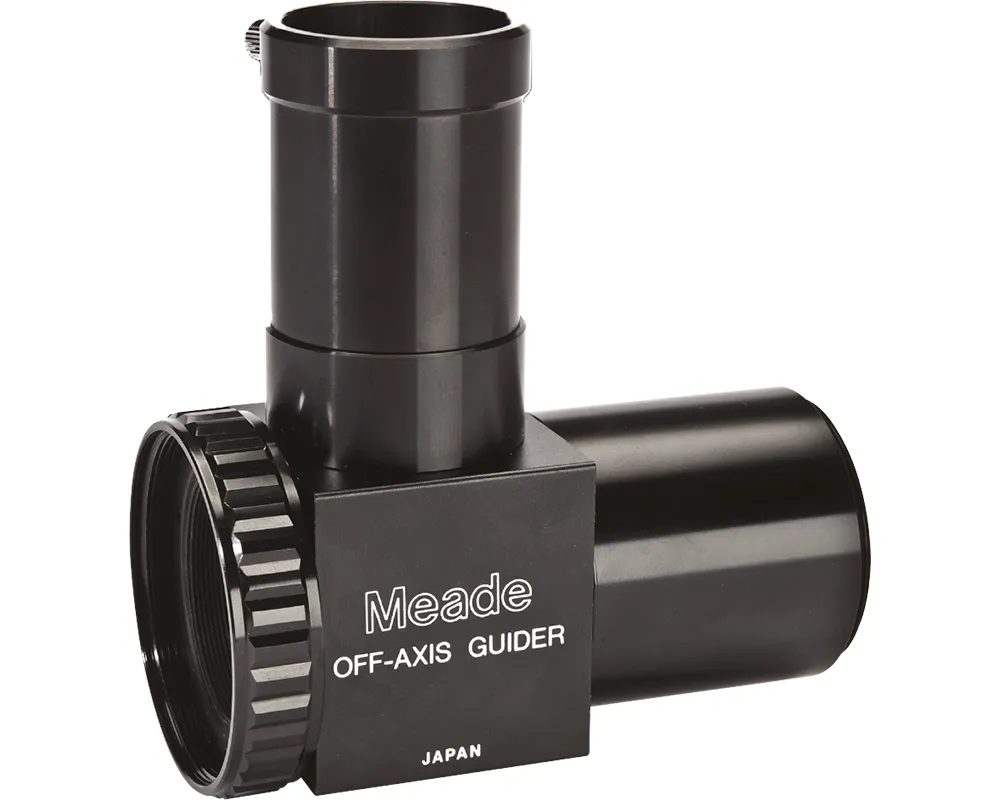
- Buy now from Meade UK
The Meade Off-Axis Guider has a simple construction with a black satin- finished ‘box’ section, and gloss-finish, tall 1.25-inch eyepiece holder, an SCT slip ring and a 43mm ‘T’ extension tube.
The tall eyepiece holder meant that we didn’t have to use eyepiece extension tubes to bring the guide camera to focus.
Matt black ridges inside the unit were incorporated to stop reflections.
Meade also supplied a 1.25-inch nosepiece, which seemed an odd choice as this diameter cuts into the prism’s light path quite considerably.
Adjustment of the prism isn’t as slick as on the other OAGs. Once aligned it remains solid, although there is no adjustment for the face angle.
We achieved focus on both the imaging and guide cameras, using our own ‘T’ extension tube for the imaging camera, but there was only one bolt to hold the eyepiece or guide camera in place.
This OAG doesn’t have a built-in method of rotating the pick-off prism to help locate suitable guide stars, although at 12.9mm wide, it does have a large prism.
To frame the imaging object with our DSLR and locate a suitable guide star meant releasing the SCT slip ring, locating a star by rotating the whole unit and then slackening off the three retaining grub screws in the camera’s ‘T’ mount and rotating the DSLR.
Although awkward to use, we managed to find suitable guide stars and, once we were locked onto them, our test images showed well-formed stars.
Telescope Service Off-Axis Guider
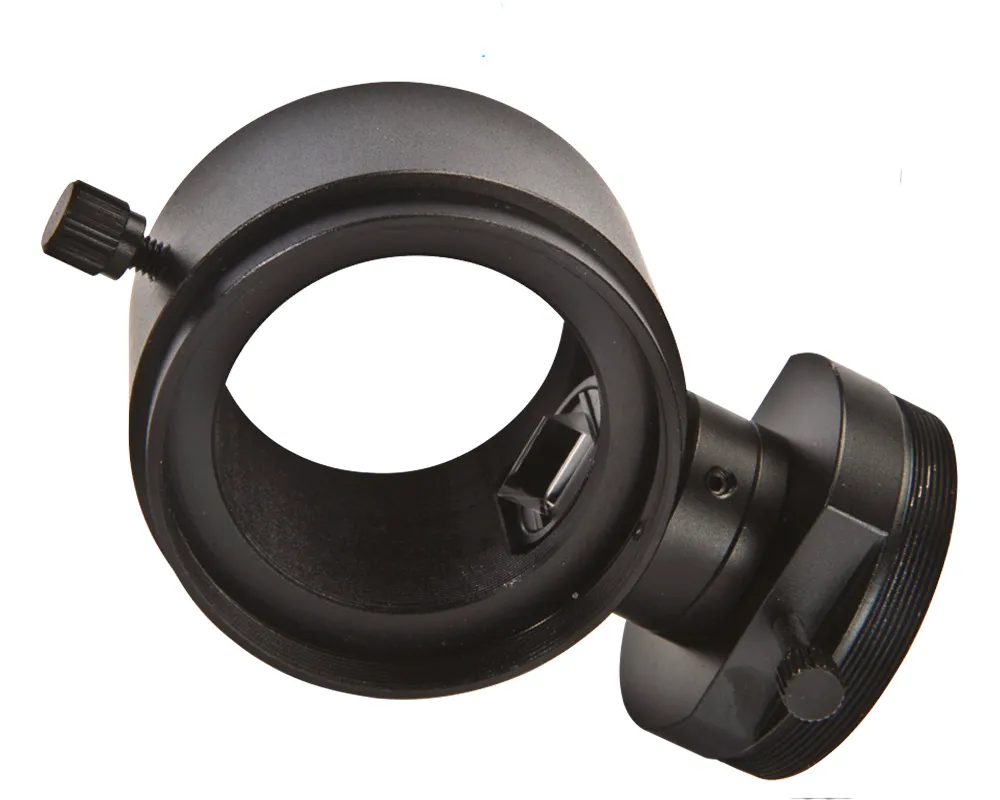
Telescope Service supplies its unit as a series of modules, making for a flexible solution.
We ordered the OAG, SCT adaptor, 1.25-inch eyepiece adaptor, plus 40mm and 10mm ‘T’ extenders.
We also used our own 17mm extension tube to space the DSLR camera away from the eyepiece holder to avoid it catching on the camera’s flash housing.
The orientation of the 10.1mm-wide prism is adjustable in exactly the same manner as the Celestron and Orion units, but with a 136° angle of rotation.
Despite very careful adjustment of the prism, this OAG didn’t produce particularly well-formed guide star shapes, especially when using our ED80 refractor.
This could have affected the tracking accuracy, but we found we were still able to autoguide successfully.
The flexibility of its solid connection for either a ‘T’-mounted guide camera like a QHY5 or the 1.25-inch nosepiece of a guiding eyepiece or autoguider (like our Starlight Xpress SXV guider) is a bonus with this OAG.
Although a rather tight fit, the compression ring in the eyepiece holder made it easy to slide the autoguider in and out to achieve focus.
Orion Deluxe Off-Axis Guider
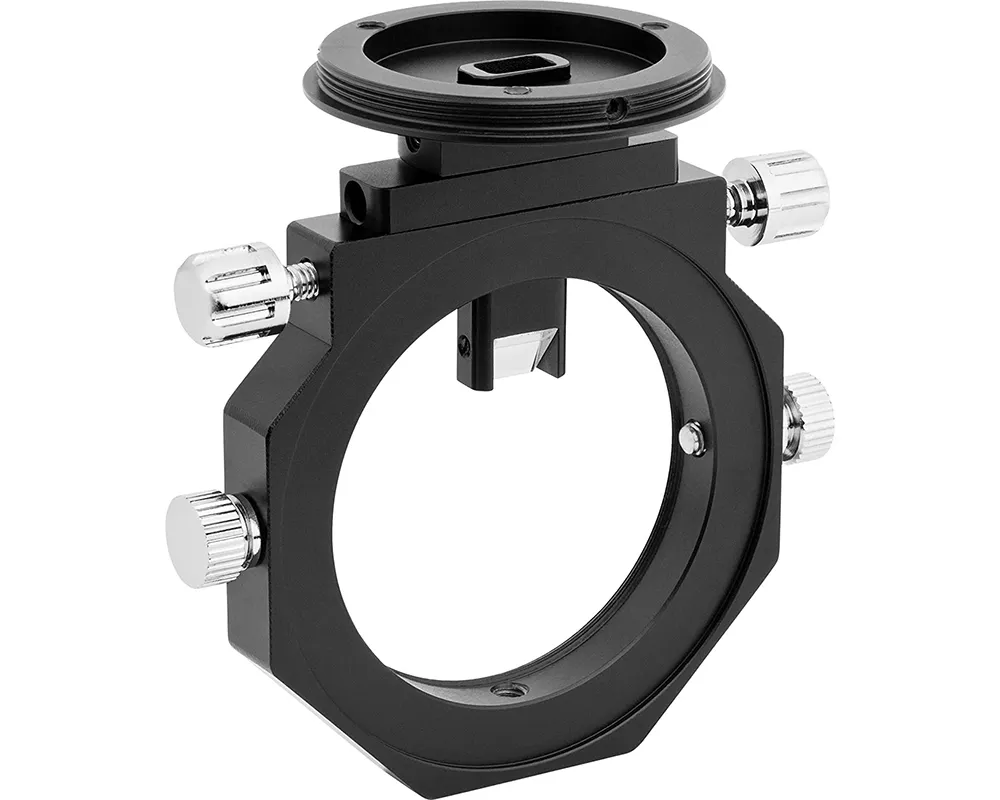
- Buy now from Orion Telescopes
Orion products are normally supplied with a good range of accessories and its Deluxe OAG is no exception.
It comes with three extension tubes, an Allen key for adjustments and a comprehensive manual.
However, this OAG is clearly designed for use with a refractor, because it’s also supplied with a 2-inch nosepiece rather than an SCT slip ring, but our own 2-inch-to-SCT adaptor resolved this.
The build quality and satin finish are excellent and the unit features a fully adjustable eyepiece/guide camera focus system, with both coarse and fine adjustment.
Designed for use with the Orion StarShoot guide camera, any guide camera with a ‘T’-thread mounting will be well catered for.
Unfortunately, the built-in 1.25-inch eyepiece holder is only 3mm deep and uses just a single grub screw to retain the eyepiece or guide camera.
This was unstable, so we used our own ‘T’ to 1.25-inch adaptor.
Adjusting the 9.5mm-wide prism is done in a similar way to the Celestron OAG.
The prism extends slightly further into the body than the others on test and the 125° of prism rotation proved fine for locating guide stars.
By including a locking collar for the imaging camera, Orion has allowed for an infinite range of adjustments to be made between the telescope, imaging camera and guide camera, making this the easiest OAG to use to locate suitable guide stars.
If your imaging telescope is a refractor rather than an SCT, this would be the natural choice of OAG for you and it produced excellent, pin-sharp stars in our test images.
Baader RCC OAG Off-Axis Guider
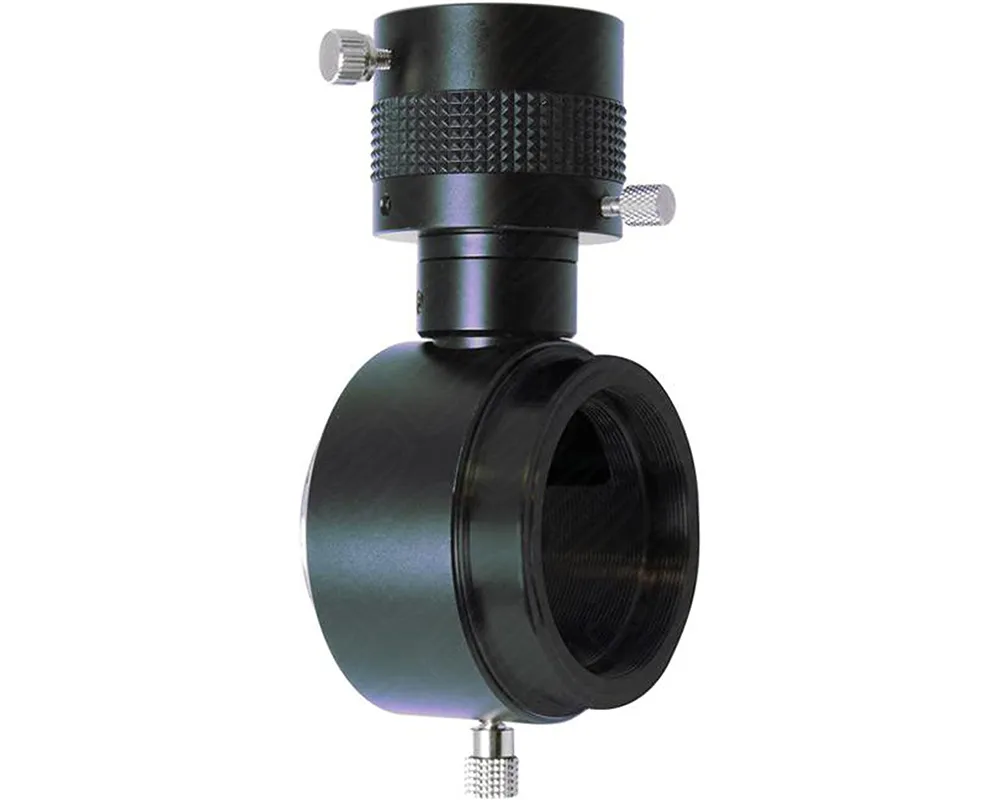
The Baader RCC OAG is a 140° swivel Off Axis Guider fitted with a with T2 thread connection.
This Off Axis Guider is made specifically for the RCC I Rowe Coma Corrector (for Newtonian telescopes) and, along with a Baader T ring, enables the user to guide any DSLR camera without the need for additional extensions.
It can also be used ‘off-axis' via the use of a reticle eyepiece or LVI Smartguiders. You will, however, need a T-ring for connection of the T-thread to your own DSLR camera, as this is specific to each camera brand and model. The OAG can be used with 1 1/4" eyepieces.

